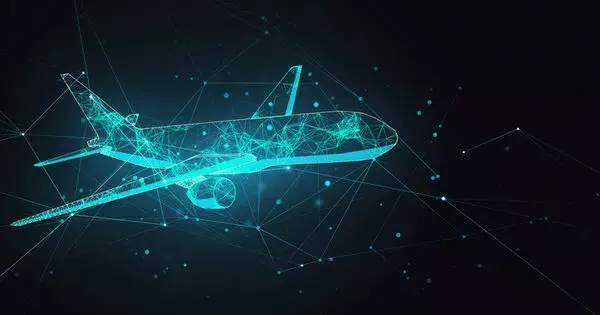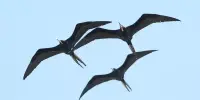Researchers have created an artificial intelligence pilot that allows autonomous aircraft to navigate crowded airspace. Artificial intelligence can safely avoid collisions, predict the intent of other aircraft, track and coordinate with their actions, and communicate over the radio with pilots and air traffic controllers. The researchers intend to develop the AI to the point where its actions are indistinguishable from those of a human pilot.
A team of Carnegie Mellon University researchers believes they have created the first AI pilot that will allow autonomous aircraft to navigate crowded airspace.
The artificial intelligence can safely avoid collisions, predict other aircraft’s intentions, track and coordinate with their actions, and communicate with pilots and air traffic controllers via radio. The researchers hope to develop the AI to the point where its actions are indistinguishable from those of a human pilot.
“We believe we will eventually pass the Turing Test,” said Jean Oh, an associate research professor at CMU’s Robotics Institute (RI) and a member of the AI pilot team. The Turing Test is a test of an AI’s ability to exhibit intelligent behavior comparable to humans.
This is the first AI pilot that works in current airspace. I don’t see UAV airspace changing anytime soon. The UAVs will have to adapt to the new airspace.
Sebastian Scherer
To interact with other aircraft as a human pilot would, the AI communicates its intent with other aircraft, whether piloted or not, using both vision and natural language. This behavior results in safe and socially acceptable navigation. The researchers achieved this implicit coordination by training the AI on data collected at Allegheny County Airport and Pittsburgh-Butler Regional Airport, which included air traffic patterns, aircraft images, and radio transmissions.
Six cameras and a computer vision system are used by the AI to detect nearby aircraft in a manner similar to that of a human pilot. Its automatic speech recognition function employs natural language processing techniques to comprehend incoming radio messages as well as communicate with pilots and air traffic controllers via speech.
Advancement in autonomous aircraft will broaden opportunities for drones, air taxis, helicopters, and other aircraft to operate – moving people and goods, inspecting infrastructure, treating fields to protect crops, and monitoring for poaching or deforestation – often without a pilot behind the controls. These aircraft will have to fly, however, in an airspace already crowded with small airplanes, medical helicopters and more.

The FAA and NASA have proposed dividing this urban airspace into lanes or corridors with restrictions on when, what kind and how many aircraft can use them. This would significantly alter the current use and standard practices in this airspace and could create air traffic jams, preventing critical aircraft, like a medivac helicopter, from reaching its destination.
While autopilot controls are common on commercial airliners and other aircraft flying at higher altitudes under instrument flight rules (IFR), developing an AI to handle the often congested and pilot-controlled lower-altitude traffic flying under visual flight rules (VFR) has proven difficult. The AI developed by the team is intended to interact with aircraft in VFR airspace.
“This is the first AI pilot that works in current airspace,” said Sebastian Scherer, an associate research professor at RI and team member. “I don’t see UAV airspace changing anytime soon. The UAVs will have to adapt to the new airspace.”
The AI pilot has yet to be tested on actual aircraft, but it has performed well in flight simulators. The team sets up two flight simulators to test the AI. The AI controls one, while a human controls the other. Both fly in the same airspace. Even if the person at the controls is inexperienced, the AI can safely navigate around the piloted aircraft.
Commercially, artificial intelligence could assist autonomous aircraft in delivering packages and ferrying passengers. To save weight and protect themselves from a pilot shortage, delivery drones and air taxis would ideally not operate with a pilot.
“We need more pilots,” said Jay Patrikar, a Ph.D. student at the RI who worked on the project.
















